
The Heartbeat of the World: New York City
Discover the energy and excitement of New York City, where iconic landmarks, diverse neighborhoods, and a rich cultural tapestry await every traveler.
New York City, often called NYC, is a vibrant metropolis that never sleeps. As one of the most iconic cities in the world, it offers endless possibilities for exploration and adventure. From the towering skyscrapers of Manhattan to the historic streets of Brooklyn, every corner of the city is filled with energy and excitement. A visit to NYC is incomplete without experiencing its famous landmarks. The Statue of Liberty stands as a symbol of freedom and democracy, while Central Park provides a green oasis amidst the urban jungle. Times Square dazzles with its neon lights and bustling crowds, offering a glimpse into the city's dynamic entertainment scene. The city's rich cultural tapestry is reflected in its diverse neighborhoods. Each area has its own unique charm, from the artsy vibes of Greenwich Village to the chic boutiques of SoHo. Food lovers will rejoice in the culinary delights available, from world-class restaurants to food trucks serving up global flavors. Museums and galleries, such as the Metropolitan Museum of Art and the Museum of Modern Art, showcase the city's deep appreciation for art and history.
Local tips in New York City
- Purchase a MetroCard for easy and affordable public transportation around the city.
- Visit popular attractions early in the morning or late in the evening to avoid large crowds.
- Check out free or low-cost activities, such as walking tours, street performances, and certain museum entry times.
- Wear comfortable shoes as walking is one of the best ways to explore the city.
- Keep an eye on local events and festivals happening during your visit for unique experiences.
Neighbourhoods in New York City
The Heartbeat of the World: New York City
New York City, often called NYC, is a vibrant metropolis that never sleeps. As one of the most iconic cities in the world, it offers endless possibilities for exploration and adventure. From the towering skyscrapers of Manhattan to the historic streets of Brooklyn, every corner of the city is filled with energy and excitement. A visit to NYC is incomplete without experiencing its famous landmarks. The Statue of Liberty stands as a symbol of freedom and democracy, while Central Park provides a green oasis amidst the urban jungle. Times Square dazzles with its neon lights and bustling crowds, offering a glimpse into the city's dynamic entertainment scene. The city's rich cultural tapestry is reflected in its diverse neighborhoods. Each area has its own unique charm, from the artsy vibes of Greenwich Village to the chic boutiques of SoHo. Food lovers will rejoice in the culinary delights available, from world-class restaurants to food trucks serving up global flavors. Museums and galleries, such as the Metropolitan Museum of Art and the Museum of Modern Art, showcase the city's deep appreciation for art and history.
When is the best time to go to New York City?
Iconic landmarks you can’t miss
Central Park
Experience the serene beauty and cultural richness of Central Park, the iconic urban oasis in the heart of New York City.

Times Square
Experience the electrifying energy of Times Square, an iconic plaza in Manhattan filled with entertainment, dining, and unforgettable attractions.

Rockefeller Center
Discover the magic of Rockefeller Center, a historic landmark filled with cultural attractions, breathtaking views, and festive experiences in the heart of New York City.

Empire State Building
Discover the grandeur of the Empire State Building, a monumental symbol of New York City, offering stunning views and rich history.

Statue of Liberty
Explore the Statue of Liberty, an iconic symbol of freedom and democracy, and enjoy breathtaking views of New York City from Liberty Island.

Brooklyn Bridge
Explore the iconic Brooklyn Bridge, a historic landmark offering breathtaking views of New York City and a unique walking experience for all travelers.

The Battery
Explore The Battery, a picturesque park in New York City offering breathtaking views, lush landscapes, and rich historical significance.

The High Line
Discover the High Line, New York City's elevated park blending nature, art, and stunning views, making it a must-visit for every traveler.

Top of The Rock
Discover breathtaking skyline views of New York City from the iconic Top of The Rock observation deck at Rockefeller Center.

Washington Square Park
Discover Washington Square Park, a vibrant cultural hub in Greenwich Village, featuring iconic landmarks, lively performances, and a rich historical backdrop.

Edge
Discover unparalleled views of New York City from The Edge, the ultimate observation deck at Hudson Yards, where adventure meets breathtaking beauty.

One World Observatory
Discover breathtaking views and immersive experiences at One World Observatory, the premier observation deck in New York City offering unparalleled perspectives.
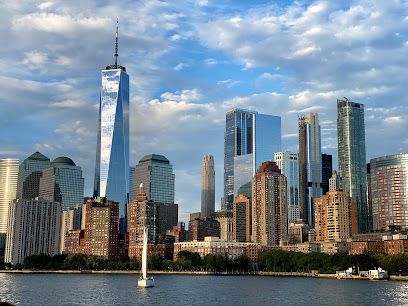
SUMMIT One Vanderbilt
Experience breathtaking views and captivating art at SUMMIT One Vanderbilt, the ultimate observatory in the heart of New York City.

City Hall Park
Discover the charm of City Hall Park, a historic green space in Manhattan offering serenity and stunning architecture amidst the city's hustle.

Little Island
Discover Little Island, a floating urban park on the Hudson River, where lush gardens meet stunning skyline views for a unique New York experience.

Unmissable attractions to see
Central Park
Discover the charm of Central Park, New York City’s iconic green heart, offering scenic landscapes, cultural landmarks, and endless recreational activities.

Central Park
Explore Central Park: New York City's sprawling oasis of beauty, history, and recreation awaits your discovery in the heart of Manhattan.

Times Square
Explore the iconic Times Square: a vibrant plaza filled with dazzling lights, Broadway shows, and the unforgettable spirit of New York City.

Times Square
Discover the vibrant energy of Times Square, the iconic plaza that captures the spirit of New York City with its bright lights and endless attractions.

Rockefeller Center
Explore Rockefeller Center: A New York City landmark with art, culture, and stunning views, perfect for every tourist's itinerary.

Empire State Building
Experience breathtaking views and rich history at the Empire State Building, an iconic symbol of New York City and a must-visit tourist attraction.

Empire State Building
Experience breathtaking views and rich history at the Empire State Building, a timeless symbol of New York City and an architectural masterpiece.

Statue of Liberty
Visit the Statue of Liberty, an iconic symbol of freedom and democracy, offering breathtaking views and rich history in New York City.

Bryant Park
Discover the vibrant oasis of Bryant Park, a cultural and recreational gem in the heart of Manhattan, perfect for relaxation and entertainment.

Bryant Park
Discover Bryant Park, a lush urban escape in the heart of Manhattan with seasonal events, dining options, and breathtaking city views.

The Metropolitan Museum of Art
Discover art and history at The Metropolitan Museum of Art, a world-renowned cultural institution in New York City, showcasing masterpieces from various eras.
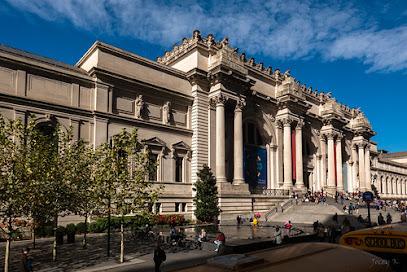
9/11 Memorial & Museum
Experience the profound tribute to resilience and remembrance at the 9/11 Memorial & Museum in New York City, a must-visit for every traveler.

9/11 Memorial & Museum
Explore the 9/11 Memorial & Museum, a poignant tribute to resilience and remembrance in the heart of New York City.

Brooklyn Bridge
Explore the iconic Brooklyn Bridge, a stunning feat of engineering offering breathtaking views of NYC's skyline and rich history.

The Battery
Discover The Battery, a historic park in Manhattan offering stunning harbor views, lush gardens, and a rich cultural experience for all visitors.

Essential places to dine
Ellen's Stardust Diner
Experience Broadway magic while savoring classic American dishes at Ellen's Stardust Diner in New York City.

Balthazar
Experience authentic French cuisine at Balthazar - where Parisian charm meets New York City vibrancy.

Thai Villa
Discover the vibrant flavors of Thailand at Thai Villa in New York City - where every dish tells a story.

Fraunces Tavern
Discover the historic charm of Fraunces Tavern in Manhattan, where American history meets delicious cuisine in an inviting atmosphere.

Oscar Wilde
Discover Oscar Wilde: A Victorian-inspired bistro and bar offering exquisite New American cuisine in the heart of Manhattan.

Gramercy Tavern
Discover Gramercy Tavern: A premier fine dining destination in Manhattan serving seasonal American cuisine with impeccable service.

Wo Hop
Discover Wo Hop: A beloved Cantonese restaurant in NYC's Chinatown known for its authentic flavors and lively atmosphere.

Le Bernardin
Discover unparalleled seafood delights at Le Bernardin – New York's premier French fine dining destination offering exquisite tastes and elegant ambiance.

The Modern
Experience fine dining at The Modern in NYC - where American and French cuisines meet artful presentation in an exquisite setting.

Manhatta
Experience breathtaking skyline views while savoring exquisite New American cuisine at Manhatta in Manhattan.

Upland
Experience the best of Californian-Italian cuisine at Upland in Manhattan - where vibrant flavors meet chic ambiance.

Beetle House
Discover Beetle House: A Tim Burton-inspired restaurant blending steakhouse classics with innovative vegan cuisine in NYC's East Village.

ONE Dine at One World Observatory
Indulge in fine American cuisine with stunning views at ONE Dine atop One World Observatory in NYC.

RH Rooftop Restaurant New York
Discover the exquisite flavors of American cuisine at RH Rooftop Restaurant in New York while enjoying breathtaking skyline views.

Per Se
Discover Per Se: A fine dining haven offering exquisite French cuisine and breathtaking views in New York City's Columbus Circle.

Markets, malls and hidden boutiques
Brookfield Place
Experience the elegance of Brookfield Place, NYC's premier shopping mall and dining destination with stunning waterfront views and unique stores.

Forbidden Planet
Explore Forbidden Planet, New York's premier comic book store, featuring an extensive selection of comics, collectibles, toys, and pop culture treasures.

Rough Trade
Discover the vibrant music culture of New York City at Rough Trade, a record store and cultural hub for music lovers.

MoMA Design Store
Explore the MoMA Design Store in Manhattan for unique gifts, art books, and modern home goods inspired by contemporary design.
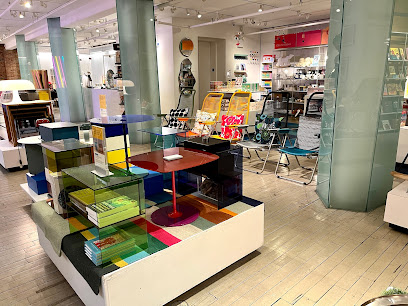
Memories of New York
Explore a unique range of gifts and souvenirs at Memories of New York, where every item tells a story of the Big Apple.

Line Friends New York Times Square Store
Explore the whimsical world of Line Friends at the iconic Times Square store, a treasure trove of toys, fashion, and exclusive merchandise.
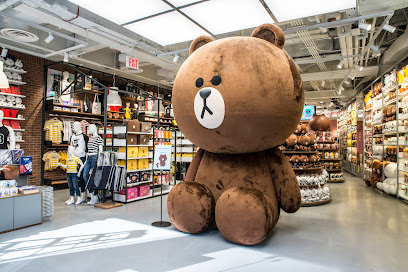
The Evolution Store
Explore The Evolution Store in NYC: A Unique Gift Shop Blending Nature, Science, and Art for Unforgettable Treasures.

Dover Street Market New York
Discover the cutting edge of fashion at Dover Street Market New York, a vibrant hub for unique brands and innovative design.

Souvenirs LLC
Explore Souvenirs LLC in Manhattan for unique gifts and unforgettable NYC memorabilia at affordable prices.

The New York Public Library Shop
Explore The New York Public Library Shop for unique literary gifts and souvenirs inspired by the world of books in the heart of Manhattan.

I Love NY Gifts by Phantom of Broadway
Explore I Love NY Gifts by Phantom of Broadway for the best selection of New York souvenirs and unique memorabilia that capture the city's essence.
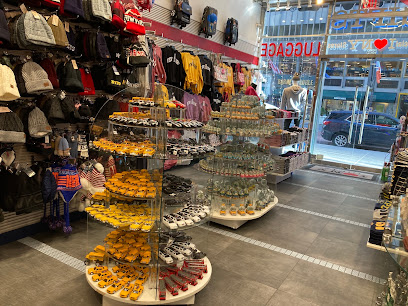
Unique Hype Collection
Discover Unique Hype Collection, a vibrant clothing store in NYC's Chinatown, where fashion meets culture in a stylish urban setting.

NiLu Gift Boutique
Explore NiLu Gift Boutique, where unique gifts and local treasures await to enrich your New York City experience with authenticity.

The Museum Shop
Explore The Museum Shop for unique gifts inspired by nature and science at the American Museum of Natural History in New York City.
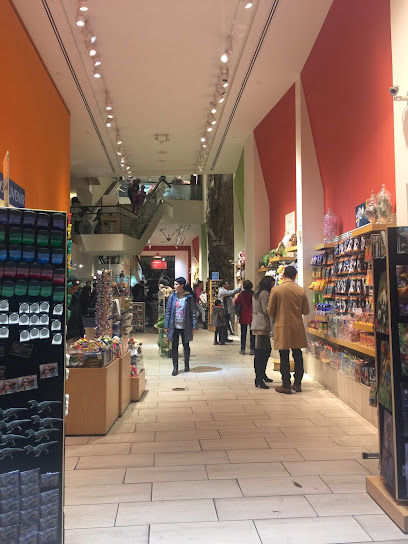
Exit9 Gift Emporium
Immerse yourself in the charm of Exit9 Gift Emporium, a delightful Manhattan shop offering unique gifts, souvenirs, and more.

Essential bars & hidden hideouts
The Dead Rabbit
Experience the authentic taste of Ireland at The Dead Rabbit, a top-rated Irish pub and cocktail bar in Manhattan with a vibrant atmosphere.
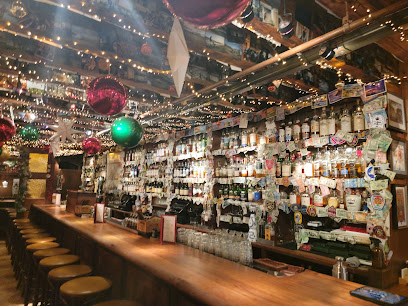
Tanner Smith's
Discover Tanner Smith's, a stylish gastropub in Manhattan offering exquisite cocktails and modern American cuisine for an unforgettable dining experience.
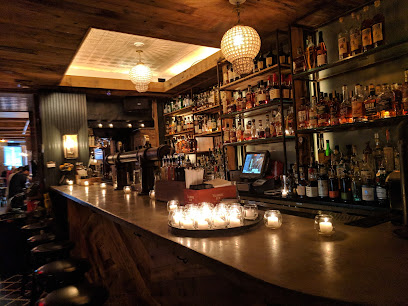
Employees Only
Experience the vibrant nightlife at Employees Only, Manhattan's premier cocktail bar and lounge, renowned for its innovative drinks and delicious cuisine.

Please Don't Tell
Discover the allure of Please Don't Tell, a hidden cocktail bar in NYC with innovative drinks and a speakeasy vibe that captures the spirit of the city.

Death & Co East Village
Experience the finest in cocktail craftsmanship at Death & Co East Village, a cocktail bar that redefines nightlife in Manhattan.

Attaboy
Discover Attaboy, New York's iconic cocktail bar, offering innovative drinks and a cozy atmosphere for an unforgettable night out.

Old Town Bar
Experience the charm of Old Town Bar, a historic gastropub in Manhattan offering delicious food, craft beers, and a lively atmosphere.

169 Bar
Discover the lively vibe of 169 Bar in Manhattan, where affordable drinks, great music, and a welcoming atmosphere await you.

The Up & Up
Discover The Up & Up, Manhattan's stylish cocktail bar offering inventive drinks in a chic and inviting atmosphere, perfect for any night out.

Mother's Ruin
Discover the lively atmosphere and creative cocktails at Mother's Ruin, a must-visit cocktail bar in the heart of Manhattan, NYC.

Patent Pending
Experience the art of cocktail making at Patent Pending, a must-visit bar in Manhattan known for its innovative drinks and stylish ambiance.

Little Branch
Experience the charm of Little Branch, Manhattan's upscale cocktail bar offering exquisite drinks and an intimate ambiance perfect for nightlife lovers.

Sweet & Vicious
Experience the vibrant nightlife at Sweet & Vicious, a lively bar in Manhattan offering creative cocktails and a welcoming atmosphere.

Burp Castle
Discover Burp Castle in Manhattan, a whimsical bar with a medieval theme offering an extensive selection of beers in a cozy atmosphere.

Raines Law Room at The William
Experience the charm of Raines Law Room at The William, a cocktail bar in Manhattan known for unique drinks and a cozy atmosphere.

Local Phrases
-
- HelloHey
[hey] - GoodbyeLater
[lay-tuh] - YesYeah
[yeh] - NoNah
[nah] - Please/You're welcomePlease/No problem
[pleez/no prob-lem] - Thank youThanks
[thanks] - Excuse me/SorrySorry
[saw-ree] - How are you?How you doin'?
[how yuh doin] - Fine. And you?Good. You?
[good. yuh?] - Do you speak English?You speak English?
[yuh speak ing-glish?] - I don't understandI don't get it
[I don't get it]
- HelloHey
-
- I'd like to see the menu, pleaseCan I see the menu?
[can i see the menu?] - I don't eat meatI don't eat meat
[I don't eat meat] - Cheers!Cheers!
[Cheers!] - I would like to pay, pleaseI wanna pay
[I wanna pay]
- I'd like to see the menu, pleaseCan I see the menu?
-
- Help!Help!
[Help!] - Go away!Get lost!
[get lost!] - Call the Police!Call the cops!
[call the cops!] - Call a doctor!Call a doc!
[call a doc!] - I'm lostI'm lost
[I'm lost] - I'm illI'm sick
[I'm sick]
- Help!Help!
-
- I'd like to buy...I wanna buy...
[I wanna buy] - I'm just lookingJust browsing
[just brows-ing] - How much is it?How much?
[how much?] - That's too expensiveThat's too much
[that's too much] - Can you lower the price?Can you do better?
[can yuh do bett-er?]
- I'd like to buy...I wanna buy...
-
- What time is it?What time is it?
[What time is it?] - It's one o'clockIt's one
[It's one] - Half past (10)Ten-thirty
[ten-thur-tee] - MorningMorning
[Morning] - AfternoonAfternoon
[Afternoon] - EveningEvening
[Evening] - YesterdayYesterday
[Yesterday] - TodayToday
[Today] - TomorrowTomorrow
[Tomorrow] - 1One
[One] - 2Two
[Two] - 3Three
[Three] - 4Four
[Four] - 5Five
[Five] - 6Six
[Six] - 7Seven
[Seven] - 8Eight
[Eight] - 9Nine
[Nine] - 10Ten
[Ten]
- What time is it?What time is it?
-
- Where's a/the...?Where's the...?
[Where's the...?] - What's the address?What's the address?
[What's the address?] - Can you show me (on the map)?Can you show me (on the map)?
[Can you show me (on the map)?] - When's the next (bus)?When's the next (bus)?
[When's the next (bus)?] - A ticket (to ....)A ticket (to ....)
[A ticket (to ....)]
- Where's a/the...?Where's the...?
History of New York City
-
New York City was originally settled by the Dutch in 1624 and was known as New Amsterdam. It was established on the southern tip of Manhattan Island as a trading post for the Dutch West India Company. Peter Minuit famously purchased the island from the Lenape Native Americans in 1626.
-
In 1664, the English seized control of New Amsterdam and renamed it New York in honor of the Duke of York, who later became King James II of England. This marked the beginning of British rule which lasted until the American Revolution.
-
New York City played a pivotal role in the American Revolution. The city was a major battleground and was occupied by British forces from 1776 to 1783. The famous Battle of Brooklyn, also known as the Battle of Long Island, was the largest battle of the war and took place in the city's vicinity.
-
The 19th century saw a massive influx of immigrants, particularly from Europe. Ellis Island, which opened in 1892, became the primary gateway for millions of immigrants seeking a new life in America. This period also marked significant industrial growth and the expansion of the city's infrastructure, including the construction of the Brooklyn Bridge in 1883.
-
The early 20th century was a time of cultural and economic prosperity for New York City. The Roaring Twenties brought about a cultural revolution with the Harlem Renaissance, a flourishing of African American arts and culture centered in the Harlem neighborhood. The city's skyline began to take its modern form with the construction of iconic skyscrapers like the Empire State Building, completed in 1931.
-
The Great Depression hit New York City hard, leading to widespread unemployment and economic hardship. However, the city rebounded during World War II as it became a major center for war production and finance. The post-war era saw a surge in population and the beginning of suburbanization.
-
During the 1960s, New York City was a hub for the Civil Rights Movement. The city witnessed numerous protests and demonstrations advocating for racial equality and social justice. The Stonewall Riots of 1969 in Greenwich Village were a pivotal moment in the fight for LGBTQ+ rights.
-
The 1970s and 1980s were challenging decades for New York City, marked by financial crises, high crime rates, and urban decay. However, the city experienced a dramatic turnaround in the 1990s under the leadership of Mayor Rudy Giuliani, who implemented policies that led to a significant reduction in crime and a revitalization of many neighborhoods.
-
The early 21st century has been a period of resilience and growth for New York City. The city faced one of its darkest days on September 11, 2001, with the terrorist attacks on the World Trade Center. In the aftermath, New York City demonstrated remarkable resilience, rebuilding the area with the new One World Trade Center and the 9/11 Memorial. Today, the city continues to be a global center for finance, culture, and innovation.
New York City Essentials
-
New York City is served by three major airports: John F. Kennedy International Airport (JFK), LaGuardia Airport (LGA), and Newark Liberty International Airport (EWR). JFK and LGA are located in Queens, while EWR is in neighboring New Jersey. From the airports, you can take taxis, ride-sharing services, airport shuttles, or public transportation to reach Manhattan and other parts of the city. The AirTrain service connects JFK and Newark airports to the subway and commuter trains.
-
Public transportation in New York City is extensive and includes the subway, buses, and ferries. The Metropolitan Transportation Authority (MTA) operates the subway and bus systems. A MetroCard can be used for both subways and buses, while the new OMNY contactless payment system is being rolled out. Taxis and ride-sharing services like Uber and Lyft are also widely available. For a unique experience, consider taking the Staten Island Ferry, which offers great views of the Statue of Liberty and the Manhattan skyline.
-
The official currency is the US Dollar (USD). Credit and debit cards are widely accepted in most establishments. However, it's advisable to carry some cash for small purchases, especially in local markets or when tipping. ATMs are abundant throughout the city, and many accept international cards. Contactless payment options like Apple Pay and Google Wallet are also commonly used.
-
New York City is generally safe for tourists, but it's important to stay vigilant. Areas like Times Square, Central Park, and major tourist attractions are well-patrolled, but be cautious in less crowded areas, especially at night. Neighborhoods with higher crime rates include parts of the Bronx and certain areas in Brooklyn and Harlem. Avoid displaying valuables openly and be cautious with your belongings in crowded places.
-
In case of emergency, dial 911 for police, fire, or medical assistance. New York City has numerous hospitals and urgent care centers. For non-emergency situations, you can visit a local pharmacy, which can provide over-the-counter medications and advice. It's advisable to have travel insurance that covers medical emergencies.
-
Fashion: Do wear comfortable shoes, as you'll be doing a lot of walking. Avoid overly casual attire in upscale restaurants and theaters. Religion: Do respect places of worship by dressing modestly and observing any posted guidelines. Public Transport: Do let passengers off the subway before boarding and offer your seat to elderly or disabled passengers. Don't eat or drink on the subway. Greetings: Do greet people with a simple 'hello' or 'hi.' New Yorkers are generally straightforward and appreciate direct communication. Eating & Drinking: Do try a variety of cuisines, including street food like hot dogs and pretzels. Don't tip less than 15% in restaurants, as it is considered impolite.
-
To experience New York City like a local, explore neighborhoods beyond Manhattan, such as Brooklyn, Queens, and the Bronx. Visit local farmers' markets, like the Union Square Greenmarket, and try a bagel from a local deli. Take a walk along the High Line, an elevated park built on a historic freight rail line. For a quieter experience, visit the Cloisters, a museum in Upper Manhattan dedicated to medieval art and architecture.
Nearby Cities to New York City
-
Things To Do in Jersey City
-
Things To Do in Hoboken
-
Things To Do in Yonkers
-
Things To Do in Paterson
-
Things To Do in Red Bank
-
Things To Do in White Plains
-
Things To Do in Greenwich
-
Things To Do in Stamford
-
Things To Do in Asbury Park
-
Things To Do in Norwalk
-
Things To Do in Long Island
-
Things To Do in Trenton
-
Things To Do in Seaside Heights
-
Things To Do in Bridgeport
-
Things To Do in Lambertville



















